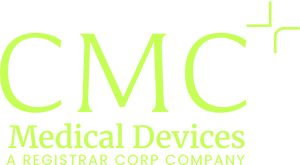How to obtain CE marking for medical devices in Europe: A complete guide for non-European manufacturers
Written by: Manuel Mateos CEO and Regulatory Affairs Director, CMC Medical Devices & Drugs S.L.
If you are a medical device or IVD manufacturer based outside the European Union and planning to sell your products in Europe, CE Marking is a legal requirement. This guide outlines the key steps to ensure compliance with the European MDR and IVDR regulations and successfully enter the EU market.
1. Classify your device under MDR or IVDR
Before anything else, determine the risk class of your product:
- Medical Devices: Class I, IIa, IIb, or III under MDR (EU Regulation 2017/745)
- In Vitro Diagnostic Devices (IVDs): Class A, B, C, or D under IVDR (EU Regulation 2017/746)
The classification will define the route you must follow to demonstrate compliance.
2. Choose the right conformity assessment route and set up a QMS
Based on your device class, you must follow a specific conformity assessment procedure. Higher-risk classes require the intervention of a Notified Body.
You also need a Quality Management System (QMS) aligned with MDR/IVDR requirements — ISO 13485 is commonly used.
3. Conduct a Clinical or Performance Evaluation and prepare the Technical Documentation
- Clinical Evaluation for medical devices
- Performance Evaluation for IVDs
You must compile detailed Technical Documentation demonstrating product safety, performance, and regulatory compliance.
4. Appoint an Authorized Representative
Non-European manufacturers must appoint an authorized representative based in the countries where they intend to market their devices. This includes the EU, the UK, and Switzerland — each with its own regulatory requirements and official representation scheme.
5. Notified Body assessment (if required)
Some Class I medical devices (non-sterile, non-measuring) may be self-certified by the manufacturer. However, most other medical devices — and all IVDs except Class A — require the involvement of a Notified Body to conduct a conformity assessment and issue a CE Certificate.
The specific procedure depends on the device classification and the applicable regulation (MDR or IVDR).
6. Sign the EU declaration of conformity
This document confirms that your device complies with the applicable EU regulation (MDR or IVDR). It must be signed and kept available together with the technical documentation.
7. Affix the CE Mark and Enter the Market
Once the required documents are in place, you can affix the CE mark to your product and legally place it on the European market.
For IVDs, transitional provisions may apply, check current IVDR deadlines if applicable.
8. Device registration and post-market surveillance
Depending on the device classification and the rollout status of EUDAMED, you may need to register your product with the relevant Competent Authority in the EU country where your Authorized Representative is located.
Registration in EUDAMED is not yet fully mandatory, but it will become so once the database is fully functional.
You must also implement a Post-Market Surveillance (PMS) plan to track the safety and performance of your device after it has been placed on the market.
9. Request a Free Sale Certificate (FSC)
A Free Sale Certificate can facilitate your exports to markets outside Europe, where proof of CE compliance is often required.
Need help with the CE marking process?
If you need help with any step of the CE Marking process, from classification to registration, feel free to reach out.




